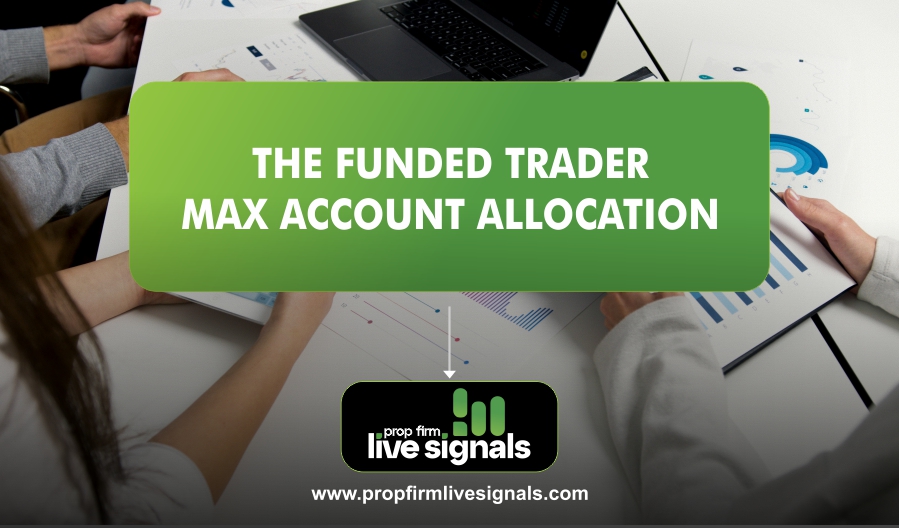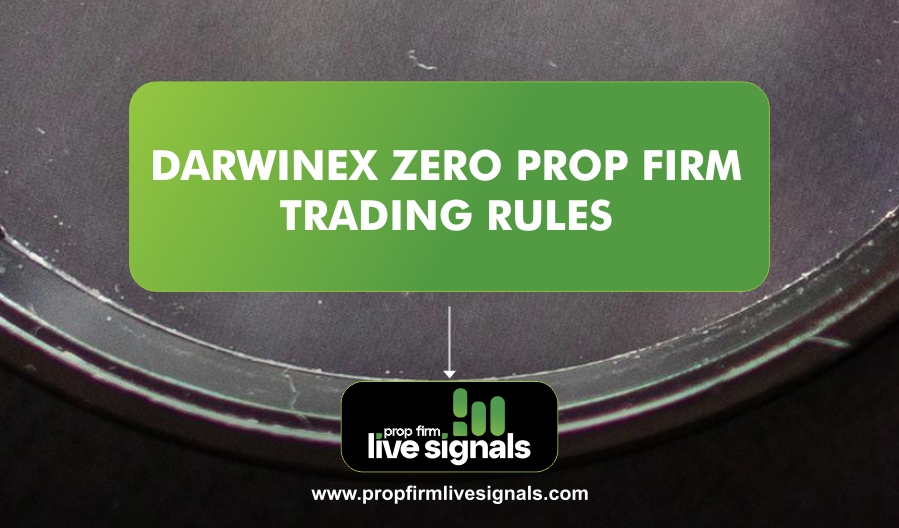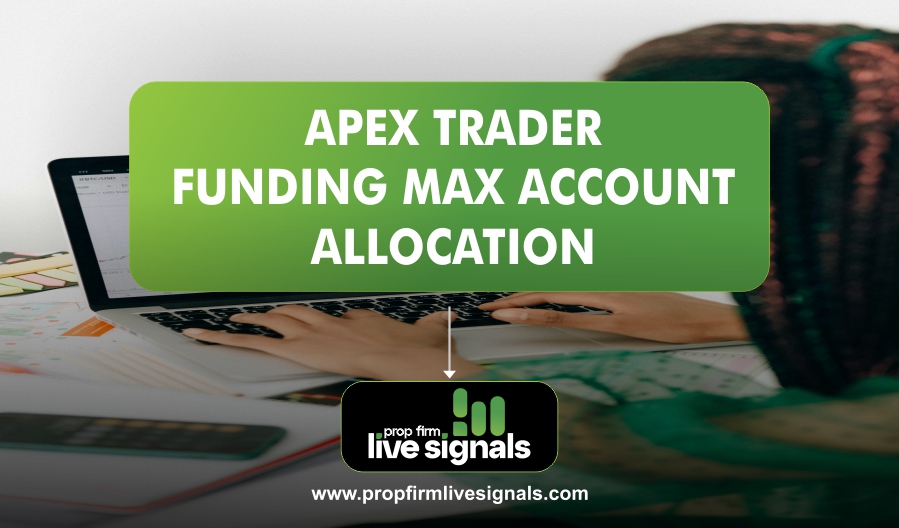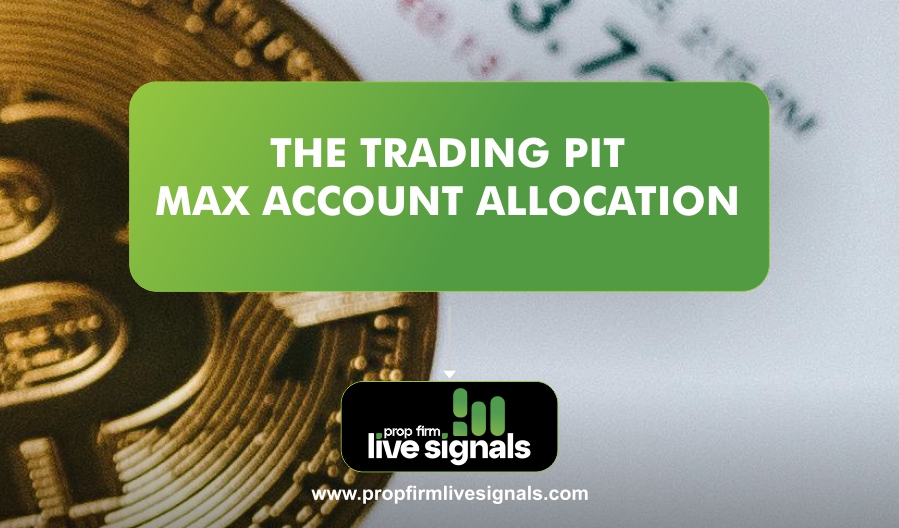What is The Funded Trader Max Account Allocation?
The Max Account Allocation refers to the maximum amount of capital a trader can manage under The Funded Trader program. In proprietary trading firms, traders usually start with smaller funded accounts, and as they demonstrate profitability and consistency, they can gain access to larger capital allocations. The Funded Trader’s Max Account Allocation allows traders to scale their accounts up to a significant amount, increasing their potential earnings.
Why is it Important?
- More Capital, More Profits: Traders can manage a larger capital size, leading to potentially higher profits.
- Scaling Opportunities: Successful traders can scale their accounts over time.
- Reduced Personal Risk: Since traders use the firm’s money, they do not have to risk their personal capital.
- Professional Growth: Trading larger accounts helps traders refine their strategies and skills at a higher level.
How The Funded Trader Max Account Allocation Works
1. Starting with an Evaluation Phase
Most proprietary trading firms, including The Funded Trader, require traders to pass an evaluation before they receive a funded account. The evaluation phase ensures that traders follow risk management rules and demonstrate consistent profitability.
- Traders typically start with an account size of their choice (e.g., $50,000, $100,000, etc.).
- They must meet certain profit targets (e.g., 10% profit within a given timeframe).
- Risk management rules must be followed, such as drawdown limits and daily loss limits.
2. Scaling Up the Funded Account
Once traders pass the evaluation and receive a funded account, they can scale their account to the maximum allocation.
- Some proprietary firms allow traders to request increased funding based on their performance.
- Traders may have to meet specific profit milestones before getting a larger allocation.
- The total Max Account Allocation varies by program but can reach up to $600,000 or more.
3. Profit Split and Withdrawals
When traders earn profits on a funded account, they receive a portion of the profits. The Funded Trader typically offers a profit split ranging from 80% to 90%, meaning traders keep most of their earnings.
- Profits are usually withdrawn via payment methods such as bank transfers, PayPal, or cryptocurrencies.
- Some firms offer bi-weekly or monthly withdrawal schedules.
- The higher the account allocation, the greater the profit potential.
Key Features of Max Account Allocation
1. Leverage
Many funded trader programs offer leverage to traders, which means they can control larger positions with less capital. The Max Account Allocation defines the maximum leverage you can use while trading.
For example, with a $10,000 account and a Max Account Allocation of 10x, you can trade up to $100,000 in positions, allowing you to profit more from market movements. However, this also means the risks are higher, so managing your positions is crucial.
2. Risk Management
The most important thing to consider when managing a Max Account Allocation is the program’s risk management rules. While the leverage allows you to control larger positions, the program will impose risk limits like maximum drawdown (the most you can lose before your account is terminated or suspended) and daily loss limits.
Typically, if your account’s value falls below a certain threshold, such as 5% of the allocated amount, you may be disqualified from the program. This helps prevent significant losses, both for you and the funded trader program.
3. Profit Sharing
Most funded trader programs operate on a profit-sharing model. After meeting the risk and performance requirements, traders are allowed to keep a portion of the profits they make from the Max Account Allocation. For example, a program may take a 20-30% cut of the profits while giving you the remaining 70-80%.
The greater the account allocation you manage, the higher the potential profits you can earn. However, your profit-sharing percentage might change based on your performance or tier within the program.
Advantages of The Funded Trader Max Account Allocation
- Access to Large Capital – Traders can access funds up to six figures, reducing the need for personal capital.
- Low Financial Risk – Since traders are not using their own money, the risk is significantly lower.
- High Profit Splits – Many proprietary firms allow traders to keep up to 90% of their profits.
- Scaling Opportunities – Successful traders can grow their accounts over time, gaining access to more funds.
- No Need for Licensing – Unlike hedge funds, traders do not require financial licenses to trade proprietary firm funds.
Challenges and Considerations
While The Funded Trader Max Account Allocation has many benefits, traders should also be aware of the challenges.
- Strict Rules and Guidelines – Traders must adhere to risk management rules to maintain their funded status.
- Profit Targets – Some traders find it difficult to hit the required profit targets within the set timeframe.
- Drawdown Limits – A maximum loss limit is enforced, meaning if a trader loses too much, they may lose the funded account.
- Evaluation Costs – Most firms require an upfront fee to participate in the evaluation process.
Conclusion
The Funded Trader Max Account Allocation is an excellent opportunity for skilled traders who want to manage larger capital and maximize their earnings without risking their own money. By following the evaluation process, adhering to risk management rules, and demonstrating consistent profitability, traders can scale their accounts and access higher funding.
If you are serious about trading and want to take advantage of a funded account, The Funded Trader’s Max Account Allocation could be the perfect way to grow your trading career.
Frequently Asked Questions (FAQs)
What is the maximum allocation for The Funded Trader?
The maximum allocation varies by program but can go up to $600,000 or more, depending on the trader’s performance and firm policies.
How do I qualify for the Max Account Allocation?
Traders must pass the evaluation phase, demonstrate consistent profitability, and follow risk management guidelines to qualify for increased allocations.
Do I need to pay a fee to get funded?
Yes, most proprietary trading firms require an evaluation fee to assess traders before funding them.
Can I withdraw profits anytime?
Withdrawal policies vary by firm, but many allow bi-weekly or monthly withdrawals.
What happens if I violate the trading rules?
Violating risk management rules, such as exceeding the drawdown limit, can result in account suspension or termination.
Can I trade different asset classes?
Most proprietary firms allow traders to trade Forex, Stocks, Indices, and Commodities, depending on their funded program.
What is the profit split for The Funded Trader?
The Funded Trader offers profit splits of 80% to 90%, meaning traders keep the majority of their earnings.
Is there a time limit to reach the profit target?
Yes, traders typically have a set number of days (e.g., 30-60 days) to meet profit targets during the evaluation phase.
Can I use expert advisors (EAs) or bots?
Some proprietary firms allow algorithmic trading, but traders should confirm this with The Funded Trader’s policies.
Is this opportunity available worldwide?
Yes, most proprietary trading firms, including The Funded Trader, accept traders from different countries.




